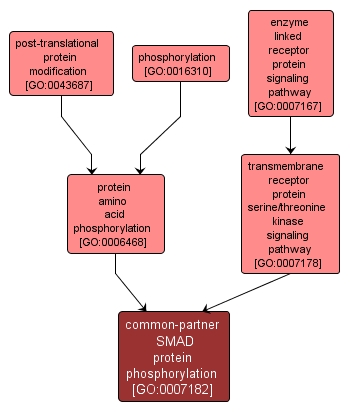GO TERM SUMMARY
|
| Name: |
common-partner SMAD protein phosphorylation |
| Acc: |
GO:0007182 |
| Aspect: |
Biological Process |
| Desc: |
The process of introducing a phosphate group on to a common-partner SMAD protein. A common partner SMAD protein binds to pathway-restricted SMAD proteins forming a complex that translocates to the nucleus. |
Synonyms:
- common mediator SMAD protein phosphorylation
|
|

|
INTERACTIVE GO GRAPH
|














